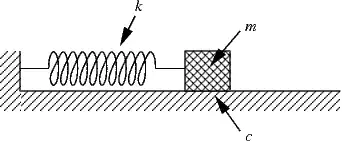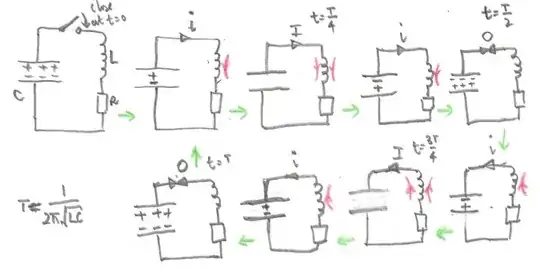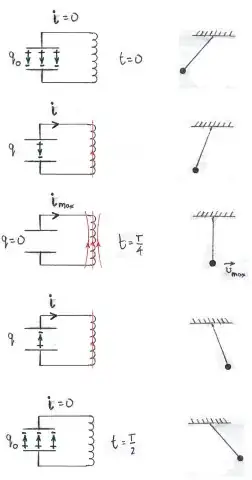How is it possible for the energy to be used twice? once in the
discharge and again in the charging in the other direction. where does
this extra energy come from?
Think of the canonical mass-spring system

Image credit
Imagine that the mass is pulled to the right some distance $d$ from the equilibrium point and released. The mass oscillates back and forth forever (ideally), passing through the equilibrium point with maximum speed $v_0$ and turning around at a distance $d$ to the left or right.
At the equilibrium point, all of the energy of the system is in the form of kinetic energy $E = \frac{1}{2}mv_0^2$ whether the mass is moving left-to-right or right-to-left.
At a turning point, all of the energy of the system is in the form of potential energy $ = \frac{1}{2}kd^2$ whether the spring is compressed (left turning point) or stretched (right turning point).
Further, the total energy of the system is constant with time since there is no friction (or other dissipation mechanism) by stipulation and so
$$\frac{1}{2}mv_0^2 = \frac{1}{2}kd^2 $$
That is, the energy isn't 'used', it simply 'sloshes' back and forth between potential and kinetic forms.
If the above isn't clear, then stop reading here.
But this is essentially an analog for the LC system where
- the mass plays the role of the inductor
- the spring plays the role of the capacitor
- the force plays the role of the voltage across
- the velocity plays the role of the current through
At a turning point, the velocity (current through) is zero, the force (voltage across) is maximum and the potential (electric) energy is maximum: $\frac{1}{2}kd^2\, (\frac{1}{2}CV^2)$. But note that the force (voltage across) can be either direction (polarity).
Similarly, at the equilibrium point, the force (voltage across) is zero, the velocity (current through) is maximum, and the kinetic (magnetic) energy is maximum: $\frac{1}{2}mv_0^2\, (\frac{1}{2}LI^2)$. But note that the velocity (current through) can be either direction.


